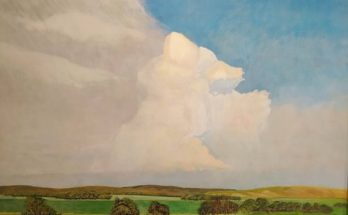By Francisco Peyret
The cinematographer Gabriel Figueroa was born in Mexico City on April 24, 1907. He died on April 27, 1997. Figueroa is the most recognized photographer of Mexican cinema in the last century. His work contributed decisively to forming a defined image of the Golden Age of national cinema. Among the most outstanding films that he made are “María Candelaria,” “La Perla,” “Enamorada,” “Río Escondido,” “Maclovia,” “Macario,” “Los Olvidados,” “Salón México,” and” La Rosa Blanca. Many have noted the close link of his personal style, aesthetically and thematically, to the works of masters of Mexican painting such as David Alfaro Siqueiros, José Clemente Orozco, and Dr. Atl (Gerardo Murillo), whose friend and disciple he was. Diego Rivera called him «the fourth muralist.» All Mexicans have always been delighted with Figueroa’s photographic composition, especially those beautiful, long shots of the Mexican characters and landscapes that gave so much identity to the cinema and the Mexican culture of the 20th century.
At the first Cannes festival in 1946, “María Candelaria” (1943) by Emilio “El Indio” Fernández won the Grand Prix du Festival. The Best Photography award went to Gabriel Figueroa. Those who lived through that time say that when Indio Fernández returned from Cannes to Mexico, reporters immediately went to visit him at his house in Coyoacán, asking him about the prizes he had won. He said he had won the Palme d’Or and left to go to his room to retrieve the prize. The reporters had run from the house, thinking Indio Fernández was going to get his gun to make sure they would not argue with him. This was the Golden Age of Mexican Cinema and its characters!
Luis Buñuel and Gabriel Figueroa filmed “Los Olvidados” in 1950. It became a cult film and part of the history of world cinema, but the film was hated in Mexico because it reflected a world in Mexico City that they did not want to recognize. Buñuel recounts in his memoirs that when he arrived on set, Figueroa was ready with some fantastic framings, but he responded by moving the camera to very ordinary pictures. In the end, they created a hostile, violent, raw, and surreal environment. It was a tremendous film in every way. Gabriel Figueroa was an artist who could take us from the most beautiful and sublime images to the most sincere depictions and the most expressive faces of Mexicanness.










